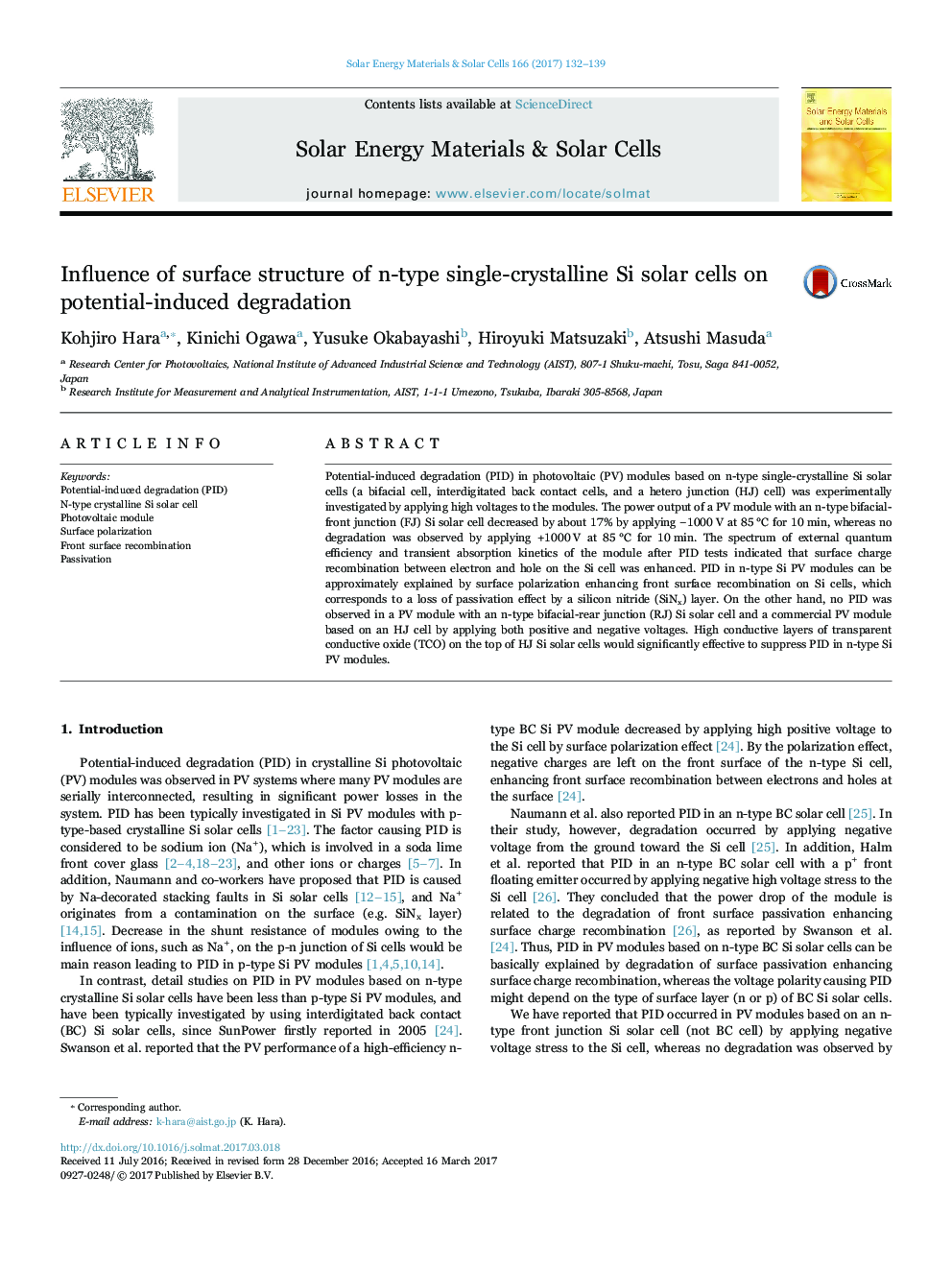| Article ID | Journal | Published Year | Pages | File Type |
|---|---|---|---|---|
| 4758842 | Solar Energy Materials and Solar Cells | 2017 | 8 Pages |
Abstract
Potential-induced degradation (PID) in photovoltaic (PV) modules based on n-type single-crystalline Si solar cells (a bifacial cell, interdigitated back contact cells, and a hetero junction (HJ) cell) was experimentally investigated by applying high voltages to the modules. The power output of a PV module with an n-type bifacial-front junction (FJ) Si solar cell decreased by about 17% by applying â1000 V at 85 °C for 10 min, whereas no degradation was observed by applying +1000 V at 85 °C for 10 min. The spectrum of external quantum efficiency and transient absorption kinetics of the module after PID tests indicated that surface charge recombination between electron and hole on the Si cell was enhanced. PID in n-type Si PV modules can be approximately explained by surface polarization enhancing front surface recombination on Si cells, which corresponds to a loss of passivation effect by a silicon nitride (SiNx) layer. On the other hand, no PID was observed in a PV module with an n-type bifacial-rear junction (RJ) Si solar cell and a commercial PV module based on an HJ cell by applying both positive and negative voltages. High conductive layers of transparent conductive oxide (TCO) on the top of HJ Si solar cells would significantly effective to suppress PID in n-type Si PV modules.
Related Topics
Physical Sciences and Engineering
Chemical Engineering
Catalysis
Authors
Kohjiro Hara, Kinichi Ogawa, Yusuke Okabayashi, Hiroyuki Matsuzaki, Atsushi Masuda,
